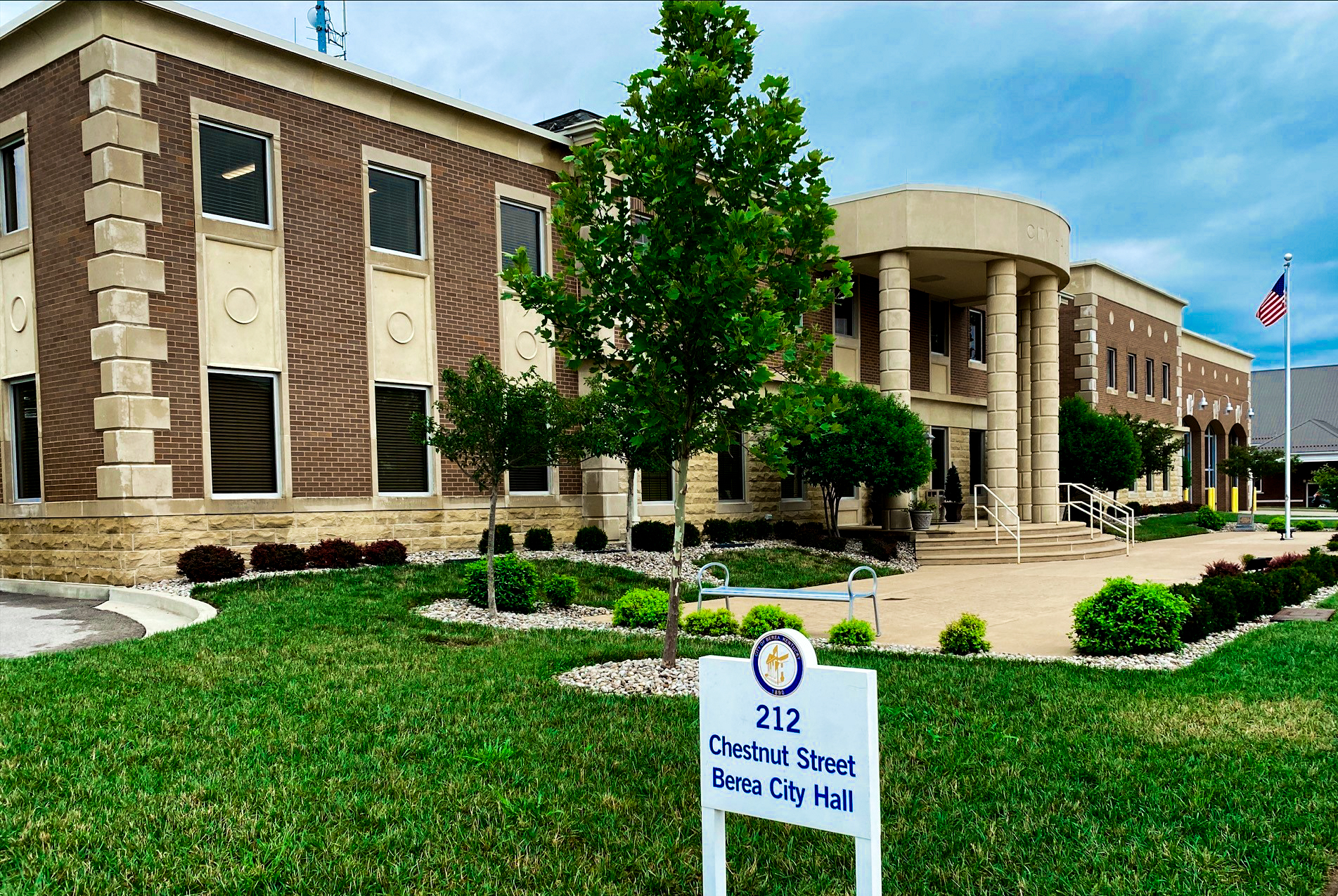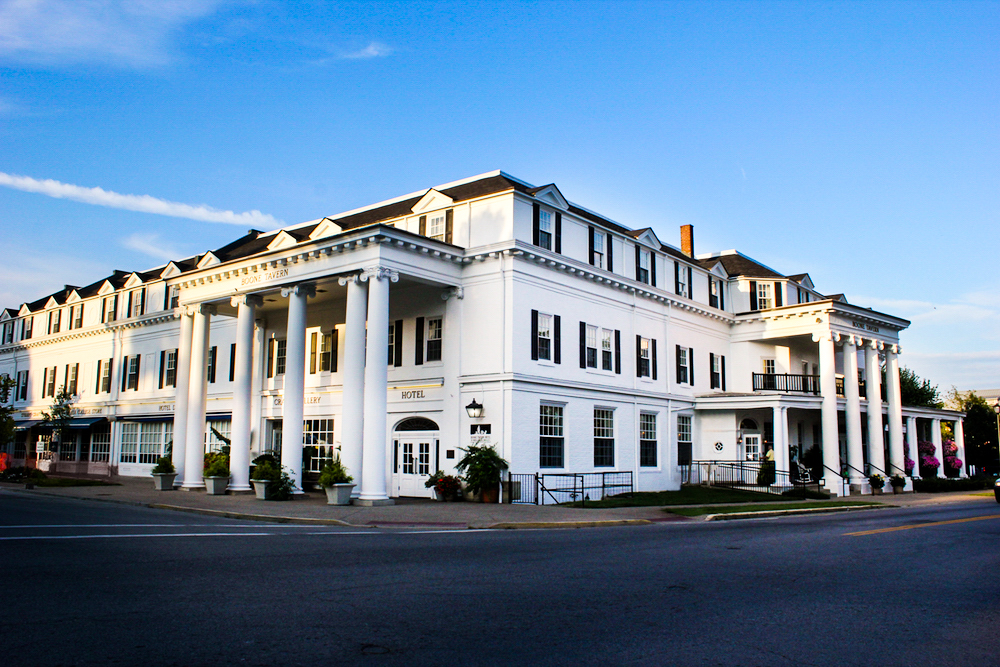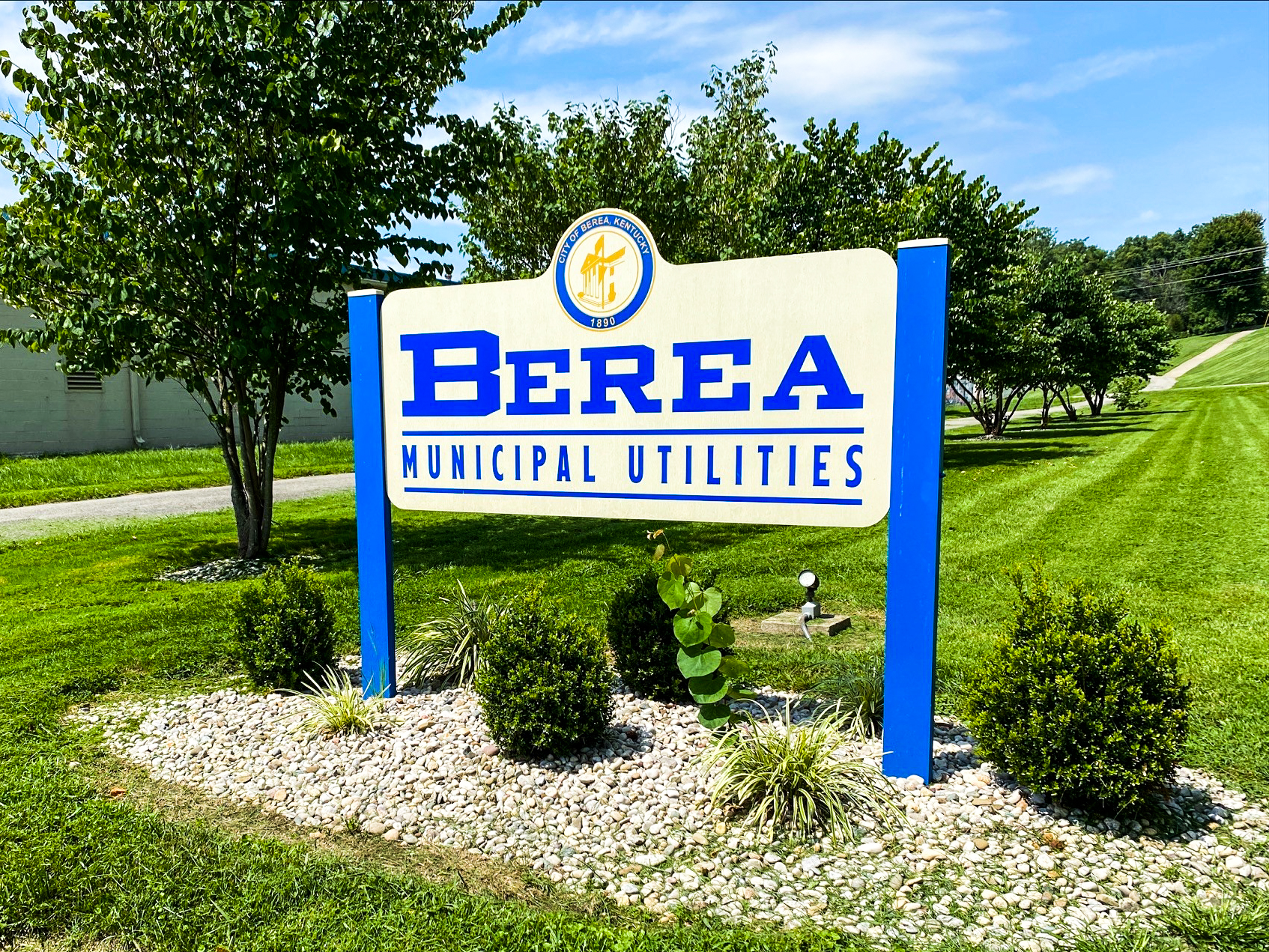Berea
6 min reada
a
October 2022
By Zachary Hoffman, Manager of Communications and Publications
It is said that the past often paints a picture of the future. The City of Berea stands as proof of this idea.
In 1775, Daniel Boone blazed a trail through the Cumberland Gap into the Bluegrass region of Kentucky. Cutting out a path for future settlers to follow, Boone established the route between Virginia and Kentucky known as Boone Trace or the Wilderness Road.

Installed in a Berea park to celebrate Berea College’s 150-year anniversary, a sculpture of Berea’s founder, John G. Fee, and the first interracial and coeducational school in the South stands as a reminder of the communities past. The sculpture depicts Fee, alongside Elizabeth Rogers, the school’s first teacher, showing the Declaration of Independence to a group of black and white students. Fee and Rogers were both forced to flee the area in the lead-up to the Civil War, but returned after the war, founding the Berea Literary Institute, which eventually became Berea College.
It was along this road that abolitionist John Gregg Fee founded Berea College in 1855. Accepting both Black and white students, it was the first non-segregated college in the South. The college became so successful that people of open minds flocked to the area, both to work and study, which led to the college helping to establish the City of Berea in 1890.
In 1904, the Kentucky State Legislature passed a law forbidding interracial education, forcing Berea College to close its doors to Black students until the law was amended in 1950. Despite the legal binds, the diverse mindsets and openness to change that had marked the city’s founding was already firmly woven into the fabric of the community.
The independence of those early trailblazers still remains within the heart of Berea, and the city continues to reflect the ideals of its past.
Berea has grown into a thriving city of more than 16,000 people. Berea College has a diverse student body of nearly 1,500 that participates in its uncommon, debt-free education model.
The city serves as the gateway between the Bluegrass and Appalachian regions of Kentucky, with access to many walking, hiking and bike trails. Undeniably unique, Berea is a renowned center for arts and crafts related to the Appalachian culture and is often called the arts and crafts capital of Kentucky.
Perhaps most importantly though, the community still strongly embraces the ideals of its forebearers.
“Berea is a very diverse, yet close-knit community with an interesting history of openness and acceptance,” said Kevin Howard, utility director for Berea Municipal Utilities (BMU). “Our community is very involved in city and utility functions and committees. It has been very beneficial to me, as a manager, to have such a diverse and rich source of ideas and suggestions, helping to point out areas in need of improvement.”
Originally inspired by community members, the Berea Solar Farm has grown to become a tremendous success and serves as an example of just how receptive the City of Berea is to new ideas.
Through interactions with the residents of Berea, the city realized that the community had a tremendous interest in solar generation. However, many community members pointed out several areas of concern regarding the economic barriers or tree canopy limitations that might prevent some individuals from participating on their own property.

The Berea Solar Farm consists of a total of 246 solar panels. The Phase I and II section consists of 120 panels, which have been leased, installed and are generating electricity and crediting customers’ accounts. The Phase III and IV 126-panel expansion was officially placed in operation in 2008 and 2014 and has more than doubled the size of the solar farm, located on the grounds of BMU on Harrison Road.
With this in mind, BMU went to work on a 60-kilowatt (kW) solar farm that provides Berea residents with the opportunity to lease solar panels and gain credits on their monthly bills. Since entering commercial operation, the project has successfully leased 64 percent of the panels to customers, providing renewable energy to people who might not otherwise have access.
The facility was the first of its kind in the state and has inspired a number of similar projects in Kentucky and the Midwest. It would not have happened without the encouragement of community residents.
“Our customers are the cornerstone of any decisions we make regarding capital improvements and policy,” Howard said. “We have a great community, and our employees take pride in working with them to provide quality service at the lowest possible rates.”
In recent years, BMU has proven how much it cares about its customers by shifting focus toward quality-of-life improvements and reliability.
In 2014, BMU completed a $5 million system-wide 4-kilovolt (kV) to 12-kV conversion project that included the construction of a new substation and a tie line feeder. The project greatly improved Berea’s overall system reliability, helping BMU to regularly attain the American Public Power Association’s Certificate of Excellence in Reliability.
The project was just one of many steps that BMU has taken to ensure that customers get the safe, reliable power they depend on.
“We have taken a proactive approach in system improvements that began with getting a full inventory of all our overhead infrastructure,” Howard said. “We’ve assessed all our electric poles and taken advantage of the latest radiofrequency technology to complete a system-wide assessment of our electric infrastructure. This has helped us with making improvements before failures can occur.”
Residents have noticed the positive effects that these reliability projects have had on their electric service — along with lowered electric prices — and in that, they are not alone. The City of Berea is experiencing an influx of businesses attracted to the city’s location, utility service, infrastructure and unique identity.
AppHarvest, a sustainable food company that aims to grow produce in greenhouses using up to 90 percent less water while increasing yields up to 30 times, recently completed the installation of a new 15-acre greenhouse. The highly efficient agricultural operation, which began operations early in 2022, is the third of its kind in the United States.
Hitachi Astemo Electric Motor Systems, which will build electric motors for the Honda Accord, was also drawn to the Berea community. The company announced plans to build a new facility in Berea that will employ approximately 200 people. It expects to begin production by March 2023.
“Economic growth is happening right now, and Berea is ripe for continued industrial development over the next decade,” said Berea Mayor Bruce Fraley. “We expect to see the city’s advanced manufacturing and technology industry continue to accelerate. I think our electric system will play a big part in that.”
The City of Berea intends to continue making improvements. BMU is currently studying rate structures for EV charging systems and the potential installation of advanced metering infrastructure and LED streetlighting.
“Economic development brings jobs, which in turn brings population,” Howard said. “We are excited to meet the coming challenge of expanding our infrastructure while continuing to provide quality service at some of the lowest rates in our region and state.”
The City of Berea employs 36 utilities employees, including seven in the electric division. The city has approximately 5,267 electric meters, 92 miles of electric lines and an average annual peak of 30 megawatts.
To learn more about the City of Berea, visit their website at www.bereaky.gov. To learn more about AMP and its members, visit www.amppartners.org.







